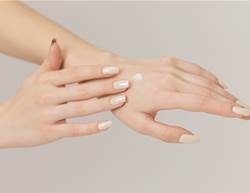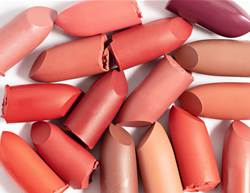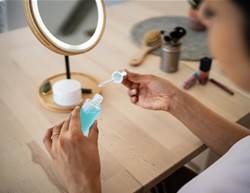There are few things more frustrating than finally growing nails to the same length, only for one or two to break as soon as they edge past the fingertip. While it can be tempting to keep nails permanently hidden beneath a manicure, it is not the best strategy for strengthening nails. The good news: simple steps and lifestyle tweaks can help brittle or breakable nails grow stronger.
“Our nails are made up of layers of keratin, a protein that is also found in hair and skin,” says clinical professor of dermatology Dr Rhonda Klein. “As we age, cells in the body produce keratin at a slower rate, which can cause nails to weaken and appear dry and dull.”
It is not just ageing. Exposure to the elements — extreme cold, excessive handwashing and contact with chemicals — can dehydrate nails, leaving them dry and vulnerable. Routine gel or acrylic manicures can also cause damage.
The upside: much of what it takes to strengthen nails is in your hands. Skip the cycle of chips and breaks and use doctor-approved habits to support stronger, healthier nails.
Signs your nails may be weak and damaged
The signs can vary, but consider stepping up nail care if you notice any of the following:
- Discolouration (yellow nails, white or dark spots or streaks)
- Changes in nail thickness (unusually thick or thin)
- Changes in nail shape (ridges, curling)
- Peeling nails
How to strengthen brittle nails (and keep them healthy)
1. Moisturise regularly.
Frequent moisturising of nails and surrounding skin with a hand cream helps protect nail integrity, says dermatologist Dr Rina Weimann. Ointments can do double duty by nourishing nails and sealing in moisture to prevent future damage.
Cuticle oil can also repair, nourish and moisturise weak nails, adds dermatologist Dr Sheel Desai Solomon.Ingredients like jojoba oil, squalane, vitamin E and almond oil are commonly used to nourish the nail plate and cuticle.
2. Keep your nails on the shorter side at first.
Long fingernails can look polished, but they are not ideal when building strength. If nails are weak, trim to a short, practical length while they recover. Shorter nails are less likely to break because there are fewer exposed edges to tear and less surface area to absorb water and chemicals. After trimming, gently round the corners with a fine file to prevent snags.
3. Become a nail filing expert.
Use a soft, fine-grit file to keep edges smooth, says dermatologist Dr Klein. Coarser files can create tiny tears that lead to peeling and hangnails. File in one direction with long, light strokes. Avoid a back-and-forth see-saw motion, which can splinter the nail. Finish by lightly smoothing the free edge to seal layers without over-buffing.
4. Choose a gentler nail polish remover.
Acetone-based removers work fast but can be harsh on fragile nails, increasing dryness that leads to peeling, splitting and white mottled marks. Opt for non-acetone or conditioning formulas when possible, limit removal frequency and follow with a wash and moisturiser for nails and cuticles to rehydrate the plate and surrounding skin.
5. Use hand sanitiser sparingly.
Most hand sanitisers are alcohol based and frequent use can dry nails, making them brittle. If you need to use sanitiser, try to avoid the nail plate and cuticles and do not overdo it. Wipes can help you target the skin of the hands without soaking the nails. If you use a liquid sanitiser, apply a moisturiser afterwards to rehydrate nails and surrounding skin.
6. Drink water.
Adequate hydration supports overall health and nail health. Without enough fluid, nails can become dry, brittle and more likely to peel or split. Keep a steady intake of water across the day to help nails retain moisture and stay strong.
7. Avoid using your nail as a tool.
Using nails to lift a soft drink can tab or pry open packaging increases the risk of chips and breaks. Use the pads of your fingertips instead and reach for an actual tool — a paper clip or small opener — for tight spaces.
8. Consider biotin supplements.
Biotin (vitamin B7) is water soluble and must be consumed regularly, but true deficiency is uncommon. Evidence for biotin improving nail growth is limited. General guidelines suggest most adults need about 30 micrograms (mcg) per day from diet and supplements combined. If you choose to trial a supplement, monitor for changes over 2 to 3 months. If there is no improvement, it is unlikely to help. Biotin can interfere with some blood tests, so pause supplements a few days before pathology and tell your GP or clinician. Always seek personalised advice if you are pregnant, breastfeeding or taking medicines.
9. Eat foods that promote strong nails.
Prioritise protein and calcium to support nail structure, says dermatologist Dr Robin Evans. Include biotin-rich whole foods such as eggs, legumes, nuts and leafy greens. Iron, zinc and omega-3s also play a role in healthy nail growth. Avoid extreme diets that cut entire food groups, as these can lead to deficiencies that may weaken nails.
10. Minimise water exposure.
Long soaks dehydrate the nail plate and can lead to peeling or splitting. Wear cotton-lined gloves for wet chores, keep hands out of the water during baths or swimming where possible and dry thoroughly afterwards. Follow with a moisturiser for nails and cuticles to rehydrate.
11. Cut back on gel and acrylic manicures.
Frequent gels or acrylics can thin the nail plate and the acetone used for removal is drying. UV nail lamps also expose hands to ultraviolet light. Take regular breaks between applications, limit removal frequency, apply broad-spectrum sunscreen to hands before UV exposure and avoid aggressive filing. If removing at home, soften and lift carefully rather than prying to prevent layers from tearing.
12. Select polishes with a safer ingredient profile.
Avoid formulas containing formaldehyde, dibutyl phthalate (DBP) and toluene, which can be harsher on weak nails. Look for “3-free” labels at minimum or “5-free” and “7-free” where additional chemicals such as formaldehyde resin, camphor, TPHP and xylene are excluded. Check ingredient lists, apply in a well-ventilated area and limit total exposure time.
13. Never skip the base and top coats.
A base coat creates a barrier that helps reduce staining, water uptake and breakage. A top coat seals colour, adds durability and slows chipping. Apply thin layers, allow full drying between coats and refresh the top coat every few days to extend wear.
14. Take time off between manicures.
Nails do not “breathe,” but constant polish and frequent remover use can dry and weaken the nail plate. If nails are brittle, plan regular polish-free breaks of 7 to 14 days to rehydrate. During breaks, moisturise nails and cuticles daily and consider a keratin or peptide nail treatment. If removing enhancements at home, soften and lift carefully rather than prying to avoid tearing layers.
15. Ask your dermatologist about a nail strengthener.
Prescription topical nail strengtheners can help reinforce brittle nails. Over-the-counter nail hardeners may offer short-term support, but prescription options are generally better for long-term use because they both fortify the nail plate and help retain moisture to reduce future brittleness. Consistent, directed use is key. Speak with your GP or a dermatologist about whether a prescription product is appropriate.
When to see a doctor about weak nails
Weak nails are often linked to exposure to the elements and ageing, but book a review with your GP if the problem is new or not improving with home care. Conditions such as iron deficiency anaemia, hypothyroidism, psoriasis and Raynaud’s phenomenon can affect nail strength. Treating any underlying issue can help nails grow healthier and stronger.
Dietary supplements are intended to complement the diet. They are not medicines and are not intended to treat, diagnose, mitigate, prevent or cure disease. Seek personalised advice if you are pregnant or breastfeeding. Do not give supplements to a child unless advised by a GP or paediatrician.










